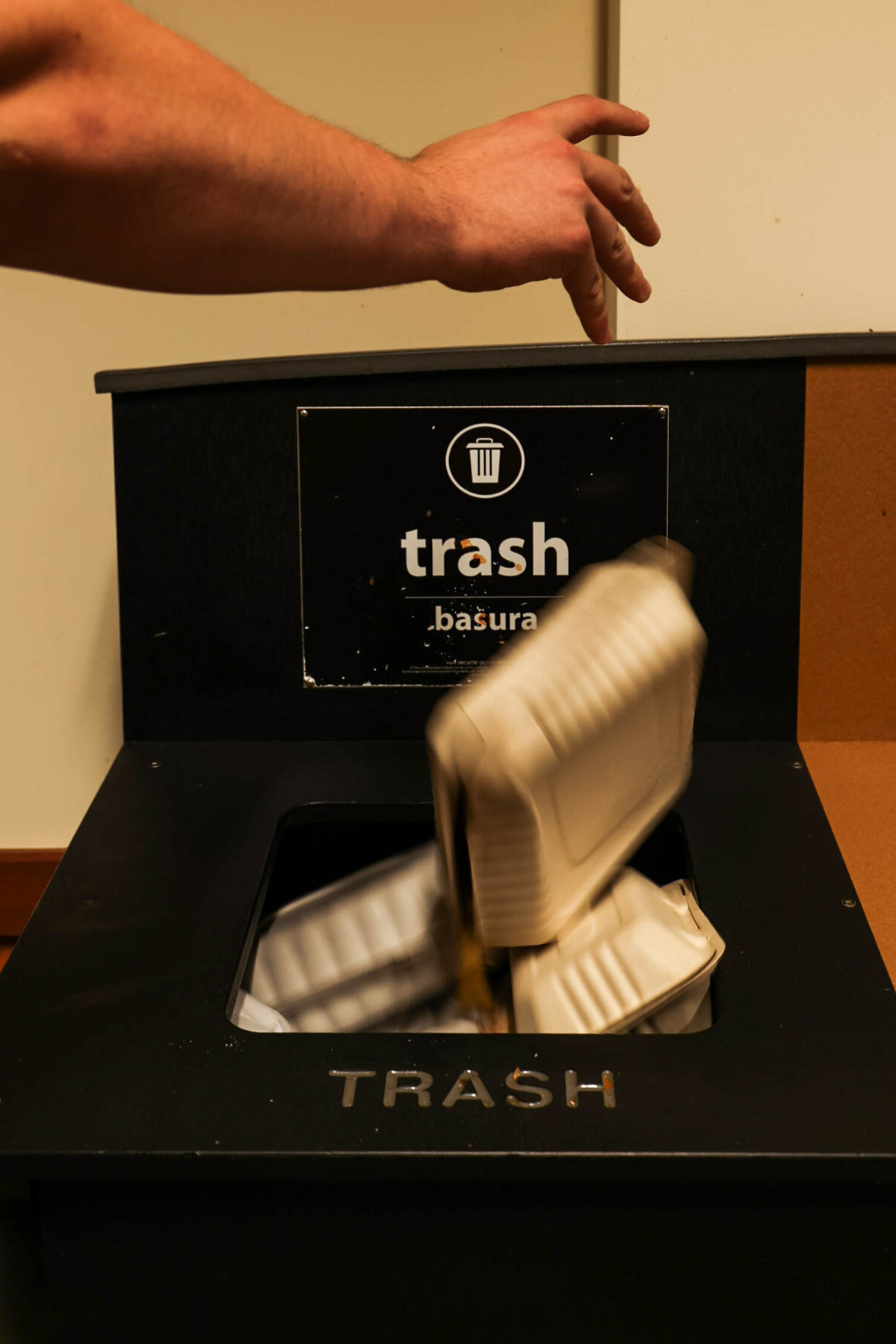Time to Smash the Trash
An orchestra of heavy machinery can be heard as the large trucks swarm the facility churning up a cloud of dust that reaches towards the sky. There are two sheds: one for recycling and one for trash, each large enough for an excavator and bucket loader to work side by side. Similar to ants, trash trucks go out into the world collecting their offerings bringing full loads back. Their home is the Cassella Waste Systems transfer station in Potsdam, New York. Every few minutes a new load arrives. If something has been thrown out at St. Lawrence University, it has seen this transfer station.
A Dean Eaton resident walks out of the door facing the quad. Her hands grasp two separate bags. One is filled with a plethora of beer cans, vodka seltzers and plastic water bottles. The other bag is stuffed full of non-recyclables. She turns right onto the path and speed-walks toward the dumpsters near the edge of her building. The girl throws her trash into its designated bin, then walks over to a similar dumpster, differentiated by a bright green “recycling” label. With an overhead motion, she launches the bag into the dumpster. Like many SLU students, she does not know that plastic trash bags are not recyclable. Every single person on campus produces trash, however many do not know how to properly dispose of it. Pub containers also can not be recycled. When trash bags or pub containers are thrown into the recycling it becomes what the trash truck drivers consider contamination. Too much contamination results in the entire dumpster load of recycling going right to the trash.
A trash truck rumbles onto campus and backs up slowly to the recycling dumpster behind Whitman. As the large hydraulic arms hoist the dumpster over the top of the truck, the driver looks closely at a monitor in the cab, which displays the recycling as it falls. If it looks like the load consists of more than 50 percent contaminated materials, it will be marked and dumped in the garbage.
On average, every American produces over four and a half pounds of trash each day, contributing to the 140 million tons of trash going to landfills in the United States every year. Without conscious action to curb the amount of trash that goes to the landfill, these numbers will keep growing.
A student-made sign hangs over the recycling bin in Richardson Hall. It loudly claims that SLU has a zero percent recycling rate. This, however, is not true. Michael Iversen, the Assistant Director of Sustainability & Energy Management at SLU offers a different number. Through an audit of all recycling dumpsters on campus, as well as by crunching numbers provided by Casella Waste Systems, he determined that the school is sitting at about a 20 percent recycling rate.
“SLU’s recycling rate has improved and is close to what it was in previous years,” Iversen says in an email. He also reveals the school’s plan to enhance its system of waste disposal, which includes better signage across campus, more education for students, as well as ReUse bags which may replace the blue recycling bins in dorm rooms.
While the school is making efforts to increase the recycling rate, it is important for students to be conscious of their habits as well. In order to keep the recycling dumpsters below the 50 percent contamination threshold, students must be aware of what can and cannot be recycled.
“That can go in the trash, that can go in recycling,” Madeline Haines ‘25 says while directing a line of students throwing out their lunch trash in the pub. “And your food scraps can go in this bucket.
“Where can this go?” asks another student as they hold up a pub container.
“As long as it’s empty, that can go right in the trash,” Haines replies.
Haines is participating in a food waste audit for class, part of which helps educate students about what they can and can not recycle. At first, busy students avoided the trash can that she sat at in the pub. However, as the days went on students became more familiar with Haines, as well as the rules for recycling.
Student leaders, such as Haines, as well as faculty members and staff agree with the need for better signage about what can be recycled. This alone, however, will not fix the issue. Without diligent action by students, recycling dumpsters will continue to be filled above the 50 percent contamination threshold, causing more and more of SLU’s recycling to end up in the garbage. The easiest way to cut down on contamination is to make sure that pub boxes and plastic bags stay where they belong: the trash.



